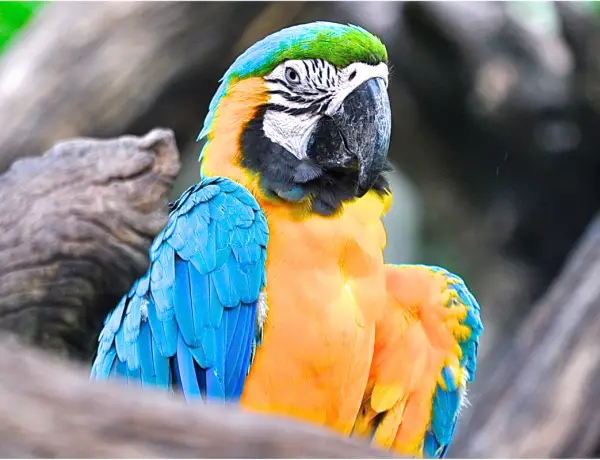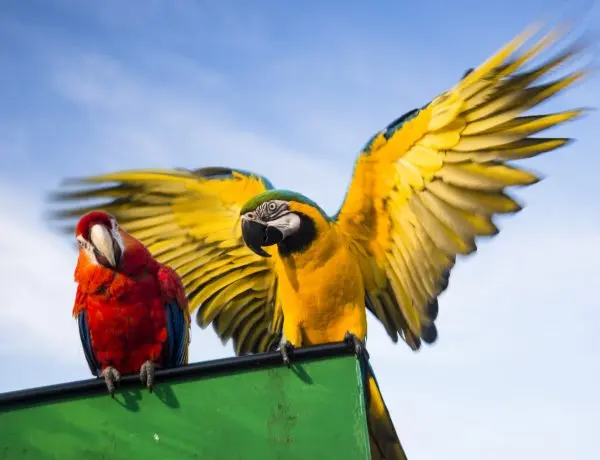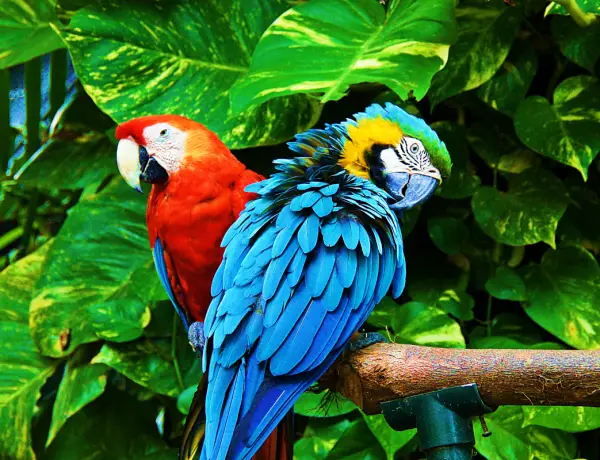Macaws are beautiful, impressive creatures in the wild! Since the beginning of the 20th century, people have kept these magnificent birds as pets, but many wonder if their pet macaw can learn to fly. We will explore not only if this is possible, but if it is the best choice to make for your bird.
Macaws and all parrots have the ability to fly, but the different species vary in the way they fly, and not all species are designed to be equally successful. Macaws have slender bodies with long wings and tapered tails. This makes them very aerodynamic and capable of longer flights than many of the smaller parrots.
Although macaws are naturally designed for flight, it is an ability that must be learned to some degree and practiced. This skill is usually taught to the bird by its parents while it is young. A bird that was raised in captivity, and especially if it was not allowed to learn to fly as a youngster, might be much more challenging to teach – and some precautions must be taken both in teaching and allowing your pet parrot to fly.
Table of Contents
First Steps for Preparing Your Macaw To Fly
Before beginning any flight instruction for your macaw, you will need to make sure that your bird is in good health. If your parrot is overweight, has heart disease, arthritis, or issues with their eyesight, teaching it to fly will likely not be possible.
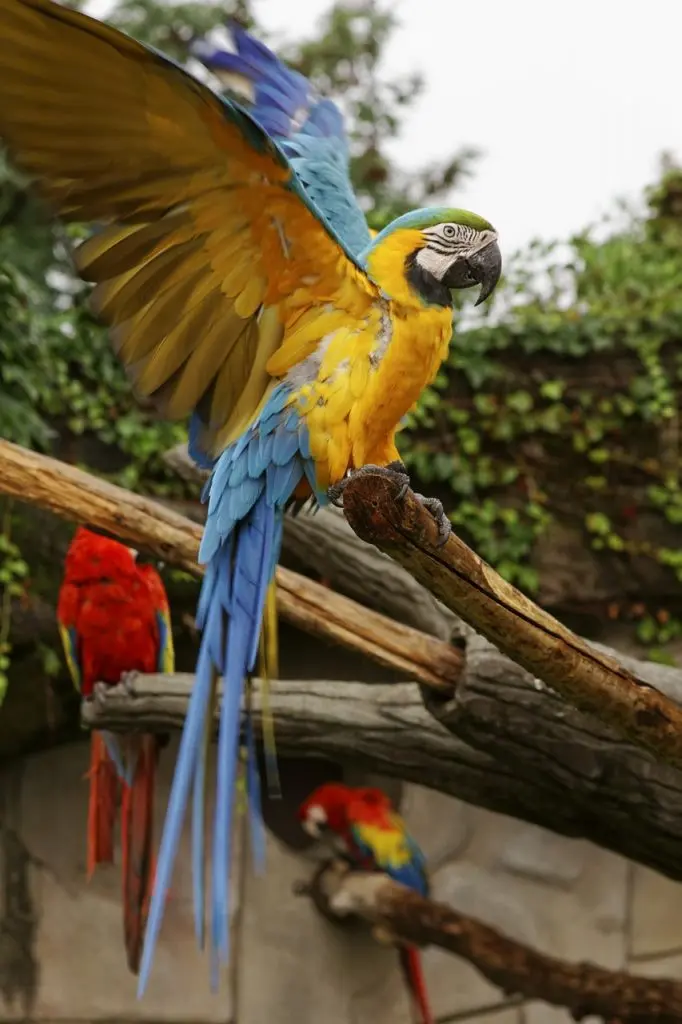
If your bird has been cleared of health problems that prevent flight, it is time to build up their cardiovascular strength. You can do this by allowing them to flap their wings in a safe environment, without allowing flight. Hold your parrot on your arm and move your arm downward; this will encourage them to flap their wings. Although this is not the same as flying, it will at least begin strengthening the muscles they will use for flight and increasing their endurance.
An older bird that has been prevented from flying for many years will have a more difficult time building the strength necessary for flight. Much like a human that does not exercise, a parrot that does not fly will have weaker flight muscles and take more time to develop those muscles.
In addition to conditioning your macaw physically to fly, you must mentally prepare them for it! That will involve building your relationship with your bird. Your bird needs to trust you completely to fly to you. Positive reinforcement training is the best method for training a parrot. Encourage your bird to interact with you, and reliably step up on your hand or arm when asked. Parrots are smart, and mistakes at this stage can be detrimental to the whole training process.
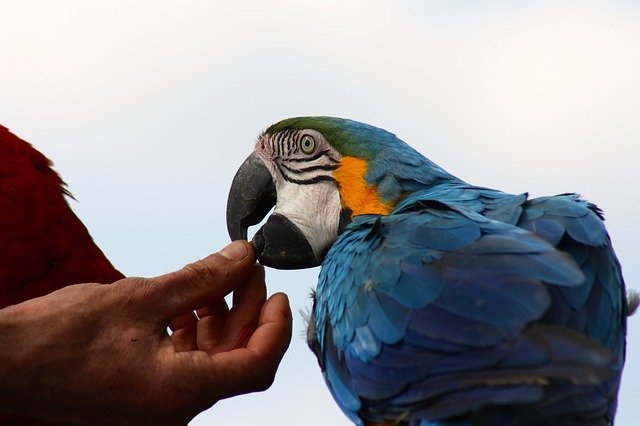
Target training your macaw now will help when you move on to the next step of encouraging them to fly. Target training teaches a bird to touch an object (target) on cue in exchange for a reward (usually a small piece of food). You will need to work daily on this with your macaw, so it understands and is happy to do that easy task.
If you have a solid relationship with your macaw, one built on trust and consistency, you need to begin introducing your bird to new environments and distractions they may encounter during flight. There are several safe ways to do this! You can take your parrot out in a secure carrier to experience new places. Placing your bird in an enclosed aviary outside will also help them get used to the sights and sounds of the outdoors. If you do not have an aviary, moving their cage outside will help as well.
How Do I Teach My Macaw To Fly?
Whether your goal is to teach your parrot to free fly, fly on a harness, or simply fly around your home, the first step is teaching them to land safely. An easy way to begin this process is with two stable perches that your bird is comfortable with. Place the perches just a short distance apart. They should be close enough together that the bird can easily step from one to the other. Target your bird to step to the second perch and reward them when they do. Repeat this several times until they are doing it quickly and happily. Then, move the perches apart a bit more – far enough so that they have to take a big step to get to the second perch. Target and reward this big step several times. The next step is to separate them a little more so your macaw has to hop from one to another to reach the target and the reward. As you slowly continue distancing the perches, your bird should begin to flap their wings for a little bit of lift as they move from perch to perch to reach their target.

Doing this gradually will teach your bird landing skills as well as work their flight muscles. When they are comfortable moving from perch to perch, substitute your hand or arm for one of the perches. Now is an excellent time to introduce the command you are going to use to get your bird to fly to you. Use a different command when you send your bird back to their perch.
Once they are comfortable with this exercise and are reliably flying to your hand from their perch, you can begin introducing some easy challenges. Change where you hold your hand, so they learn to fly up and to fly down to land. Do the exercise in different parts of your home to add distractions as well. If you are going to by flying your bird outside, this exercise can be done safely in your enclosed aviary.
Should I Allow My Macaw to Free Fly?
Allowing your parrot to free fly can be a beautiful thing to watch (free-flying is allowing them to have unrestricted outdoor flight). Still, there are many dangers associated with this practice. It involves months, if not years, of training a reliable recall. It also involves training your parrot to be comfortable in the environment they will be flying in. Even with years of training, free-flying is extremely risky. Some of the dangers that may be encountered with free-flying include:
- Birds of prey & other aggressive native birds – Macaws in the wild fly in flocks for safety. Your pet macaw flying by itself is likely to be targeted as prey by hawks, etc. Even crows, ravens, and gulls might attack it.
- Powerlines
- Windows
- Humans – While a nuisance bird may be shot at by humans, others may end up stolen.
- Dogs, pools, & cars – A macaw in flight is not likely to be injured by these items, but parrots tire easily, especially if it is not accustomed to long flights. Getting tired and landing in the wrong place can result in injury or death.
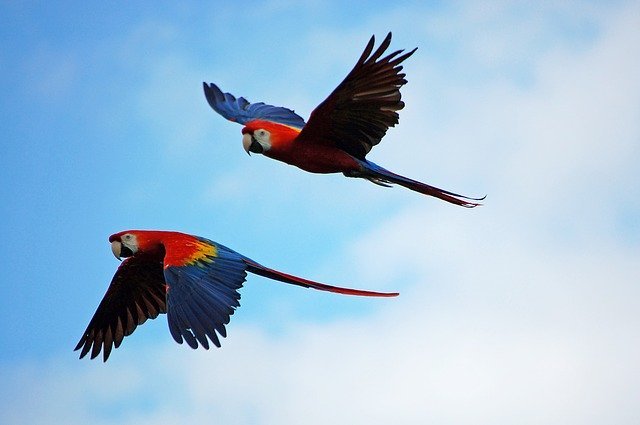
If you decide that free flight is the best option for your macaw, I recommend that you find a group of other parrot enthusiasts that have successfully taught their birds to free fly and work directly with them. The training required is extensive, and not something that you should attempt after simply reading one book or watching YouTube videos. Flying your parrot in a group is safer than flying them alone – and more fun for your bird!
Can I Fly My Macaw With A Restraint?
Restraint can be a safer option for many parrots than free-flying. There are different restraint systems available that allow you to maintain control of your bird, yet give them the freedom to fly short distances outdoors.
An excellent restraint device is The Aviator Pet Bird Harness and Leash. It was developed at the Harman Aviary and has been used successfully by many parrot owners.
It is relatively easy to train an unweaned macaw to accept a harness, but the difficulty of training is likely to increase with the age of the bird. Again, patience and positive reinforcement are the keys to success. Once comfortable in the harness, you can safely allow your bird short flights outdoors – so long as you have a reliable recall!
Another restraint system used in the past involves cuffs around your parrot’s feet that are each attached to a separate short leash (called a jess) and coupled together with a swivel. That swivel is then attached to a longer leash. That system is often utilized by falconers for birds of prey. Although some people have used them on parrots, it is not recommended, due to the difference in the leg structure between parrots and birds of prey.
What About Wing Clipping?
Wing clipping is sometimes recommended to prevent flight in pet birds. However, this practice has become controversial in recent years. Although many people consider it to be the same as a haircut or nail trim for a dog or a human, it is not the same thing! And, while trimmed flight feathers will often grow back, it is not guaranteed that they will. Trimming the flight feathers not only impairs their flight ability (notice I said impairs and not removes!), it alters the shape of their wings and can affect their mobility. Birds use their wings even for everyday movement and certainly for exercise. A macaw with clipped wings will often crash to the ground if they attempt to fly. That can impair their desire to learn to fly later in life, as they found it to be unsuccessful when they tried before.
A macaw with clipped wings will not be able to soar around the neighborhood gracefully like one with their full feathers, but they will still be able to gain some lift and be challenging to catch. Attempting to fly with clipped wings is extremely dangerous if your bird becomes frightened. If they try to fly to get away in fear, they will not be able to maneuver and land properly to avoid danger.
Macaws have a biological impulse to fly, but that impulse must be built upon for them to fly successfully. If you would like to allow your pet macaw to experience the freedom and exercise that flying offers, please do so, but carefully. Please do your research, be patient, and invest the time into training them properly.


